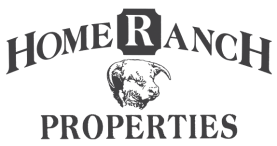Using a Section 1031 Exchange When Selling a Farm or Ranch. Section 1031 of the Internal Revenue Code is a powerful tax-saving and wealth-building strategy.
Home Ranch Properties California 1031 Exchange Tips
Deciding to sell the family farm or ranch can be a difficult and emotional decision. It is also one that can come with complex tax and income issues.
When selling a large parcel of land, a ranch, or equestrian estate, you could be subject to taxes that can range from 25% to more than 50% of the sales price, depending on the property’s ownership structure (i.e., partnership, LLC, S corporation or C corporation). There are ways to minimize certain taxes by forming corporations or charitable foundations such as a charitable remainder trust (CRT).
In this article we’re going to cover California 1031 Exchange Tips.
California 1031 Exchange Tips
In California, a §1031 exchange allows you, as a real estate investor, to defer the federal and state income tax that would normally be incurred from selling real property, by using the proceeds of the sale to purchase another ‘like-kind’ property. In terms of a §1031 exchange, this means that any type of investment property can be exchanged for any other type of investment property, with the exception of any personal property (such as your primary residence or vacation home) which is not eligible for this type of trade.
Partnerships, LLC, Corporations, C and S Corps
When the farm or ranch is owned by a partnership or LLC; and partners want to go their separate ways after the sale, or one or more partners want to do a 1031 exchange. With advanced planning, you can convert the ownership from partnership/LLC to Tenants-in-Common. farm or ranch is owned by a partnership or LLC; the partners want to go their separate ways after the sale, and one or more partners want to do a 1031 exchange.
When the farm or ranch is owned by a corporation. The biggest problem with owning appreciated real estate inside a corporation is that, unlike partnerships and LLCs, you can’t get it out of the corporation without having a taxable event. This effectively eliminates the partnership strategies of direct deeding to the individual partners. But the corporation can perform a 1031 exchange if the shareholders are willing to remain invested together. This can be a simple 1031 Exchange solution into replacement real estate.
When the ranch or farm is owned in a C corporation it adds another challenge because it is a separate taxable entity and therefore pays tax on profits at the corporate level. However if you convert the C corporation to an S corporation (S corporations can sell appreciated real estate and generally not owe tax on the sale. Instead, the gain is passed through to the shareholders, who will be subject to tax on their individual tax returns). Consult your tax advisor as there are rules for how many years you must be a S corporation.
Most Common Types of 1031 Exchanges
Simultaneous Exchange
A simultaneous exchange is when the sales of the relinquished property and the replacement property close simultaneously on the same day.
Reverse Exchange
A reverse or forward exchange is when you acquire the replacement property first and then sell your relinquished property afterward.
Construction or Improvement Exchange
This type of exchange allows you to use the equity from the sale of your relinquished property to purchase and improve the replacement property while the qualified intermediary holds the deed.
Selling a Home Along with the Ranch or Farm
When selling your farm or ranch that has both business property such as land, livestock and equipment, and non-business property like a home, you can use the 1031 exchange to defer tax on the sale of business and investment property, but you cannot include the residence. One strategy is to use Section 121 to exclude gain on your home sale that will enable you to take cash out of the sale of your home tax-free.
Multiple Separately Deeded Parcels
Over the years, family farms and ranches can often be composed of multiple separately deeded parcels with different costs from having added to their existing acreage over the years and fluctuating real estate values. A proper cost basis strategy is a simple, but effective, strategy to reduce capital gain taxes. Sell for cash parcels with the highest tax basis because they will have the lower associated tax due. And, those parcels with the lowest tax basis have the highest capital gain and potential tax, making them better parcels to 1031 exchange. Be sure sure your ranch broker understands what you are trying to accomplish up front so there are no surprises to potential buyers.
Final Thoughts
Whether you and your family receive maximum value for your years of hard work may be determined by if and how you plan for the sale. The 1031 Exchange strategy can be a powerful strategy when selling your farm or ranch.
California 1031 Exchange Tips from Home Ranch Properties are not intended as specific tax or legal advice. Please consult a professional for specific advice for your situation.

